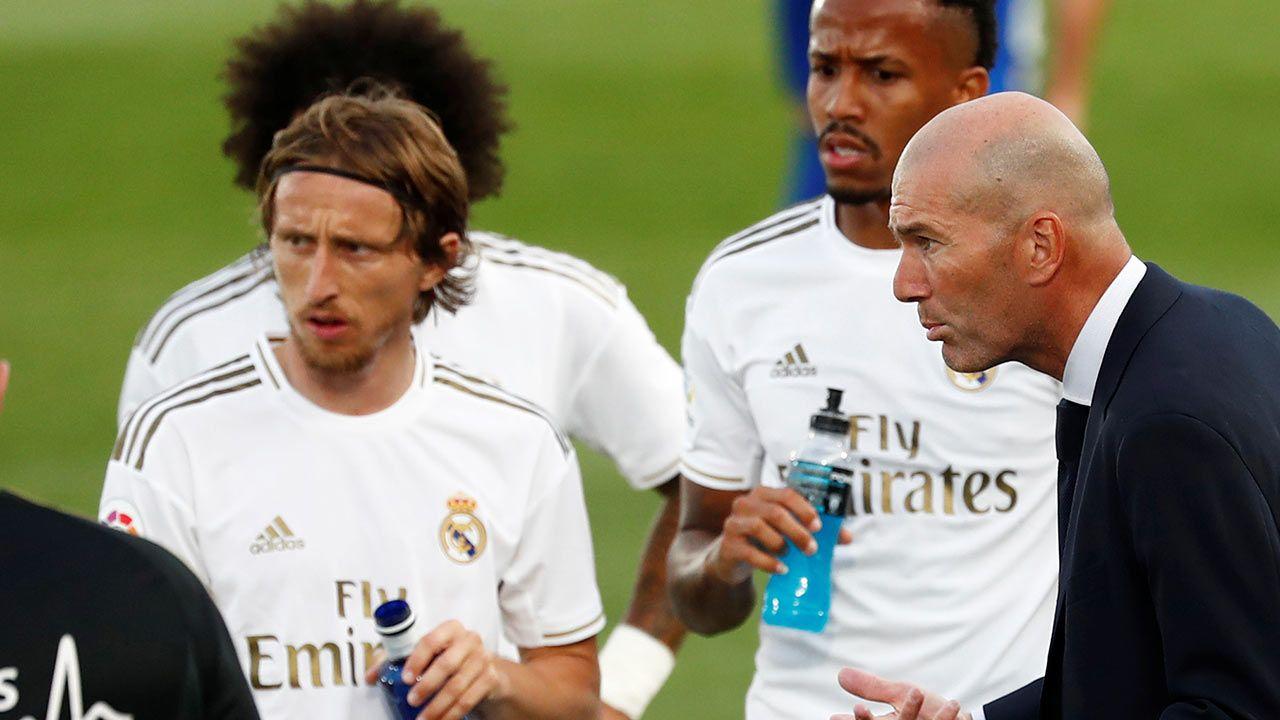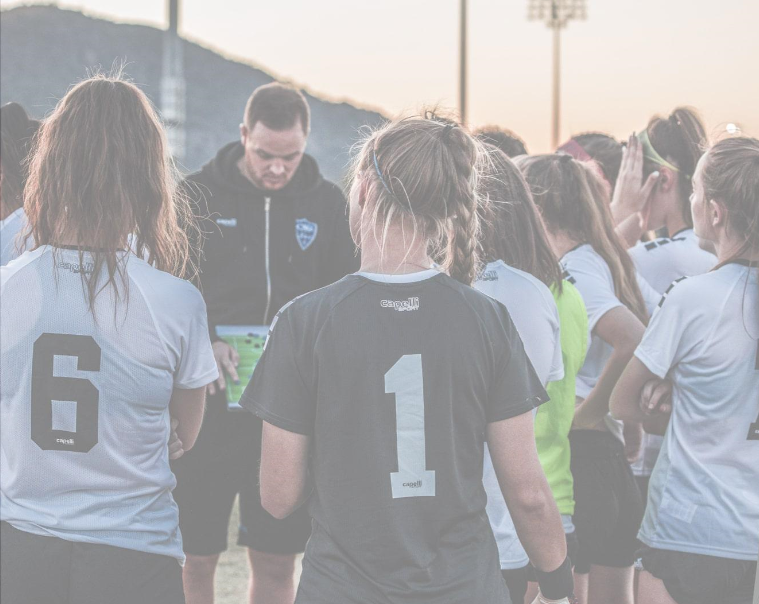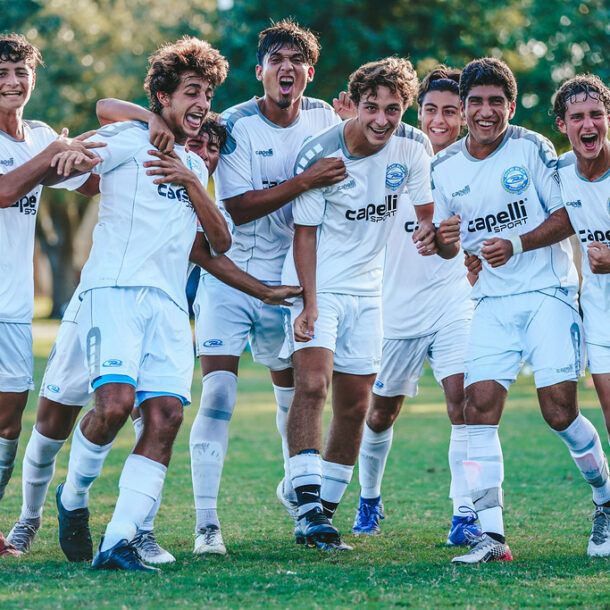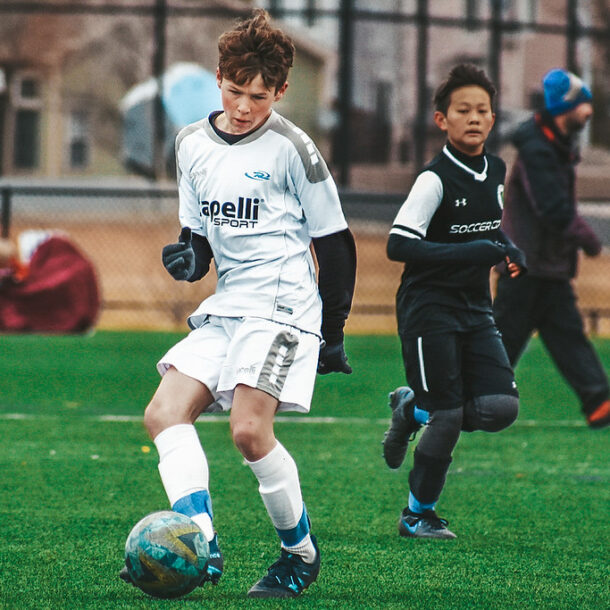
*Clicca qui per leggere la versione italiana di questo documento – The Rush Way Junior ITALIA
*Clique aqui para a versão em português deste documento – The Rush Way Junior PORTUGUES
THE RUSH WAY AGE GROUP GUIDES
The Rush Way Age Group Guides provide a more in depth look at Rush Soccer’s Developmental Blueprint, covering technical, tactical, physical, and psychosocial considerations, as well as guiding on how to apply Rush Way philosophies effectively to each age group.
THE RUSH WAY PHILOSOPHY
The Rush Way is the embodiment of all that is Rush Soccer; the rules and manner in which Rush members hold themselves and how they expect other Rush members to conduct themselves. This is not inherent in all people, but can be learned. The Rush Way encourages passion, leadership, respect and, above all, quality. Before reading this document and complementary to any age group curriculum, every coach should read the entire Rush Way Philosophy.
Formation: Rush Soccer uses the 1-3-5-2 as its preferred formation and starting point to implement its style of play. However, the Rush Way understands soccer is dynamic with constant movement. A formation represents simply a starting point related to a certain moment of the game.
Rush Soccer encourages coaches to vary approaches depending on a deep understanding of their players’ strengths and weaknesses as well as the rival’s. What Rush Soccer sustains at all times is its style of play.
Rush teams are proficient in readapting this base formation within the game onto 1-5-3-2 and 1-4-3-1-2 depending on the needs and situations encountered.
As we want our players to be adaptable, experiencing these alternatives and other popular base schemes like 1-4-3-3 and 1-4-2-3-1 is important for their development, therefore encouraged.
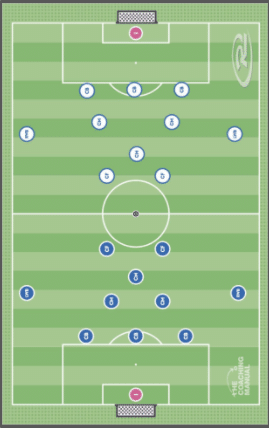
6-3-1: The 6-3-1 philosophy is in place to ensure that all teams are progressing and improving consistently, as well as experiencing the emotions of winning and losing through manipulating six wins, three losses and one tie throughout the year. If a team is winning all the time, they are encouraged to schedule a scrimmage against tougher competition to be sure they are being pushed. Likewise, if a team is in a losing slump, then a scrimmage is encouraged against an opposition that they should beat, to regain a positive attitude, develop a goal scoring mentality and create confidence in defense.
70 Games & Playing Time: Playing time for any individual is completely at the coach’s discretion. Rush encourages that playing time at all levels should be equal throughout the season. Limiting team roster size will aid in increased playing time for all players. Remember the spirit of the 70 Games Philosophy stated at The Heart Of The Rush: One of the main objectives of a Rush club must be to provide opportunities and environments for the players to elevate the overall number of playing hours as much as possible. At this stage, we believe it is a cornerstone of our player development approach to provide 70 11v11 learning instances along a calendar year. This is also explained in further detail at The Heart Of The Rush.
Core Values: There are 11 players on the field and so Rush Soccer has 11 core values as well. Highlight them all at this stage.
- Accountability
- Advice
- Empathy
- Humility
- Enjoyment
- Leadership
- Passion
- Respect
- Safety
- Tenacity
- Unity
Player Position: As of this age group, players start specializing in the positions that maximize their abilities and don’t overexpose their weaknesses. We still suggest to develop players in two positions, having at least one alternative to their main role on the team.
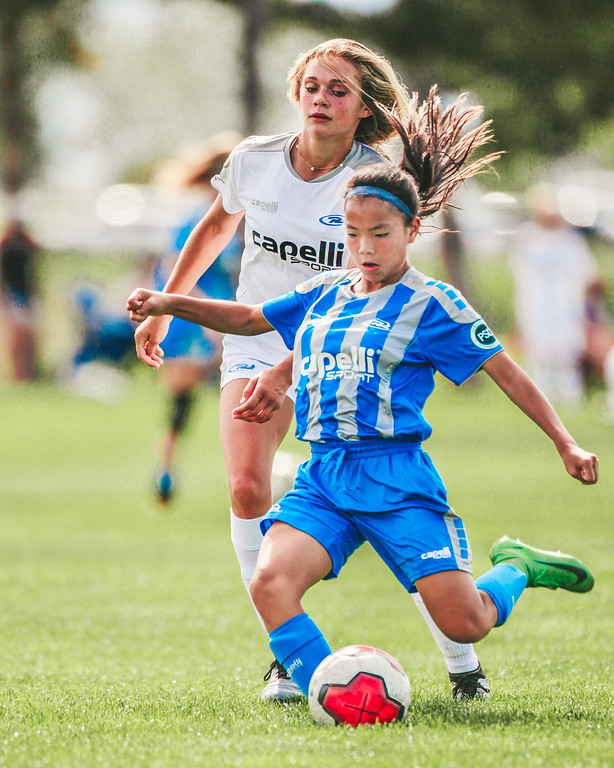
70 Games & Playing Time: Playing time for any individual is completely at the coach’s discretion. Rush encourages that playing time at all levels should be equal throughout the season. At the younger developmental ages, players should be exposed to as much of the game as possible. Limiting team roster size will aid in increased playing time for all players. Remember the spirit of the 70 Games Philosophy stated at The Heart Of The Rush: One of the main objectives of a Rush club must be to provide opportunities and environments for the players to elevate the overall number of playing hours as much as possible. At this stage, we believe it is a cornerstone of our player development approach to provide 70 11v11 learning instances along a calendar year. This is also explained in further detail at The Heart Of The Rush.
Substitutions: When possible and regardless of the state of the game, all players should exchange courtesy with their replacement. This will promote team spirit and give confidence to the players entering the field.
Pre-game / Warm Up Routines: For this age group, the Rush Way suggests pre game routines that include a global body warm up, followed by an activity to review a concept fresh on the player’s minds. Leaving at the end a few minutes for the players to warm up freely is also advisable. Keep the entire warm up period between 15 and 30 minutes.
During the Match: Games are a great coaching opportunity, but caution, don’t over do it. Coach actively but don’t misunderstand that with constant narrating and interventions. Actively means engaged. Make sure your coaching is positive and builds confidence, like stated in the Rush Blue Thread, and make most of your comments when off the ball and preferably in natural stoppages.
Half Time: Rush encourages players to analyze problems and discuss solutions on their own before coach intervention. Players should be given a couple of minutes away from the coaching staff to voice opinions and discuss solutions. The coach should then bring their views and knowledge to the group. The Rush Way expects our coaching to be positive and build confidence, like stated in The Rush Blue Thread.
Post Game: Once again, the Rush Way expects our coaching to be positive and build confidence. Take the opportunity to promote core values like Humility & Respect when winning, and Tenacity & Unity when losing. Keep it brief and don’t go on profound game analysis. Let both the players and yourself cool down and take some time to analyze the match objectively.
Greeting: Players are expected to greet the staff with a handshake for all local, national and international staff. The Rush staff across the country expect their players to shake their coaches hand each time they meet. Why?…respect, build social skills, break down barriers, learn culturally accepted behavior, the list goes on.
Practice and Game Attendance: Is optional for all levels of player within the Rush Organization. Playing other sports and multiple sports at the same time is the choice of the family and zero repercussions will be administered the coaching staff. Players who wish to become better and succeed within the game will attend all practices and games with the attitude of wanting to leave a better player. This is a reflection of our core value Accountability. The Rush Tutor Program promotes and encourages players who wish to push themselves the opportunity to practice with any other team within the club on any given day.
Acknowledgement: When a coach addresses a player during training or competition, it is important the player acknowledges. Communication is two-way.
Player First, Team Second: Similar to the European youth club structure, Rush encourages the player to be first before his or her individual team. For example, we encourage:
- The player to play with the adult team before his own team’s game.
- The player to train with older, experienced teams in place of his own teams.
- The player to guest play with an older team in place of their own game.
This enables players to be comfortable playing on teams that are in line with their ability regardless of age but based on performance in training and game days. Players are encouraged to train with higher level teams to accelerate their development.
Team Photos: The Rush has a certain style of their pictures, learn it and apply it. Take a photo of your rotating starting 11, and a whole team picture to promote Unity.
R.E.A.C.H.: All players should be aware of the R.E.A.C.H., Rush Equipment Assisting Children program and understand the importance of social responsibility. In a nutshell, this program provides the opportunity for our players to turn in their old uniform in order to donate to our less fortunate Rush clubs and players around the globe.
Coaches’ Sideline Behavior: From the outside, the conduct of the coach on the sideline can be perceived as a reflection of the conduct of all coaches within Rush Soccer. Coaches are a reflection of their players and should conduct themselves with respect for the officials, the opponents and the game of soccer. Remain positive when at all possible but motivational throughout. Coach actively but don’t misunderstand that with constant narrating and interventions. Actively means engaged. Education and being a first class role model are the paramount reasons that a coach has been given the honor to coach for Rush. It is always important to remember this.
Parents’ Sideline Behavior: Rush parents are expected to be positive, motivational and supportive to all players and officials. Learning the Rush chants is encouraged. Parents are expected not to coach from the sidelines but enjoy the experience of the game.
Players’ Sideline Behavior: Players are encouraged to support other Rush teams and give their full-hearted support. Learn the Rush song; be as loud but respectful as possible and help educate the rest of the country in the way soccer should be supported, as it is in the rest of the world.
Risk Management: Accepting a coaching position means accepting responsibilities. Exercise reasonable care, have a first aid kit, take a CPR course, as well as make sure every player departs with their parents or designated individuals, never leave a player alone after practice, among others.
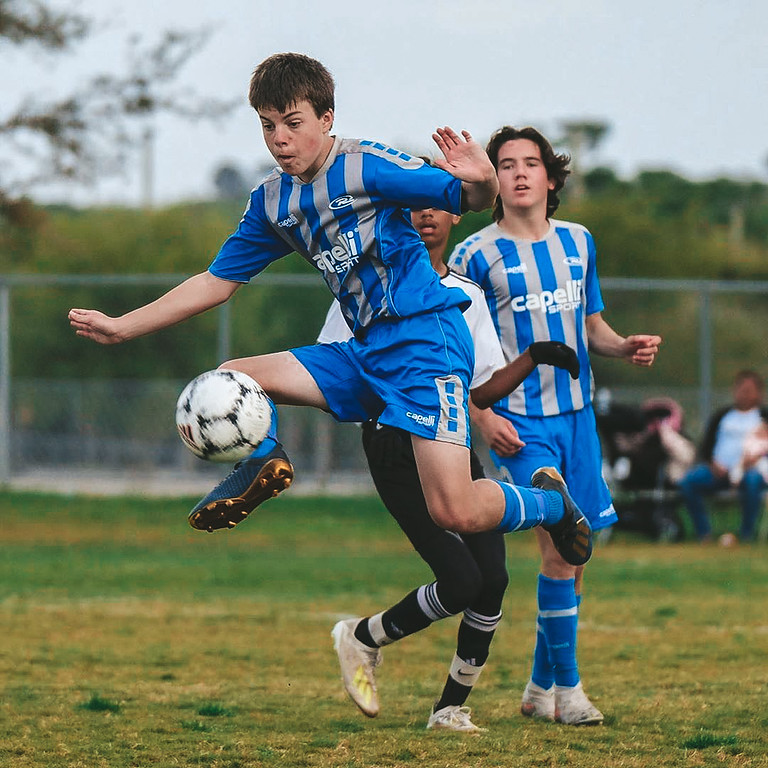
The Rush Blue Thread
In Soccer as in life, most things are not black or white and common sense can’t be replaced. Exceptions aside, the Rush Blue Thread pursues the application of the following eight principles at all levels and ages. Rush Soccer has a player centered approach.
- The coach uses conditions to encourage competition.
- There is an ongoing cycle of feedback and reflection between the coach and the player.
- Each activity contains decision making elements.
- The design of the season, week, and training session meets the needs of the players and teams.
- Coaching points are based on visual cues.
- The ball is rolling at least 70% of the time in the session.
- A minimum of 75% of the session is game based and opposed.
- Coaching is positive to encourage and build confidence.
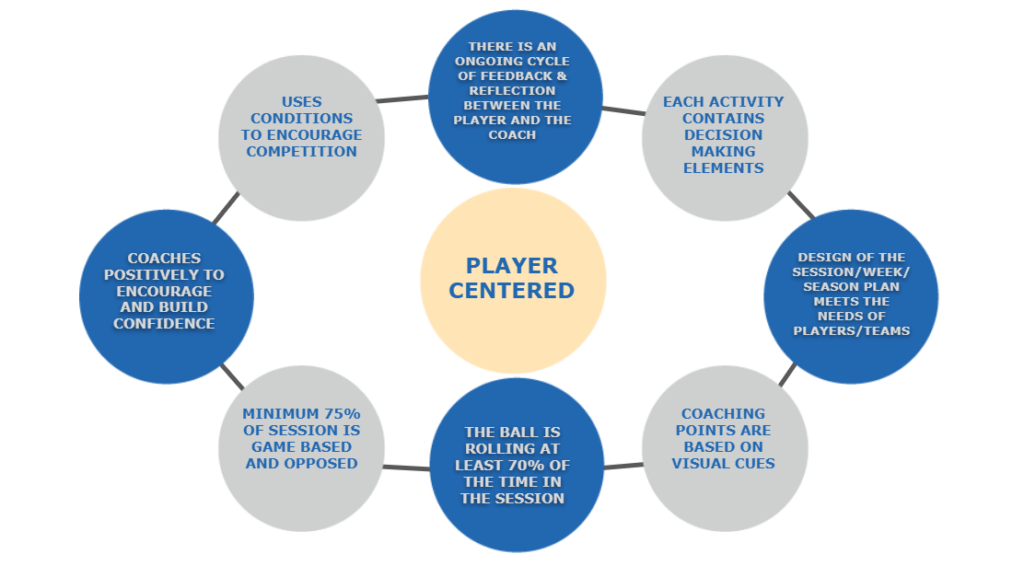
THE RUSH WAY: U14-U15 JUNIOR DIVISION
OBJECTIVE: Sustain A Balance Between Technical & Tactical Development While Leading The Players Towards The Specialization Stages.
Age Group Coaching Approach & Psycho-Social Considerations: We’ll repeat this same statement for all age groups: When you coach a team or a player, the most important thing is always to understand who you are coaching.
By this stage, we encounter players that have full capacity of understanding abstractions and hypothesis. Their span of attention is longer and starts to resemble the adults one. This is the main reason why the presence of more advanced tactical concepts is encouraged now, to a point in which it balances the technical loads.
Coaches should still keep a close eye at the biological ages of the players, as they might still find some big differences in development. Make sure you don’t judge your players’ abilities by confusing skill with physique. This is the most common coaching mistake at this stage: to associate the effectiveness of an action to a skill rather than a temporary physical advantage that will not be sustained in time. Make sure you support your players that are developing later from a biological standpoint, as well as create the right environment to challenge those that have developed early, so that they find themselves in need of developing skills rather than rely on a constant usage of their physical advantages.
Remember that is frequent to find players that have grown a lot in a short period of time. This growth is not always organized, what might result not only in the new adolescent suffering from physical pain and a declining coordination (they seem to be “clumsy”), but this also might generate a lot of stress on the player that’s encountering a new, different body, as well as experiencing multiple hormonal changes.
It is important to pay attention to them and support them through these changes. It is frequent to observe mood changes. These players enter into their adolescence, that is a complicated stage characterized by insecurities, sensitivity, a constant search and discovery of one’s personality and in which our teammates and coaches have a strong influence on us. This highlights the importance of coaching positively.
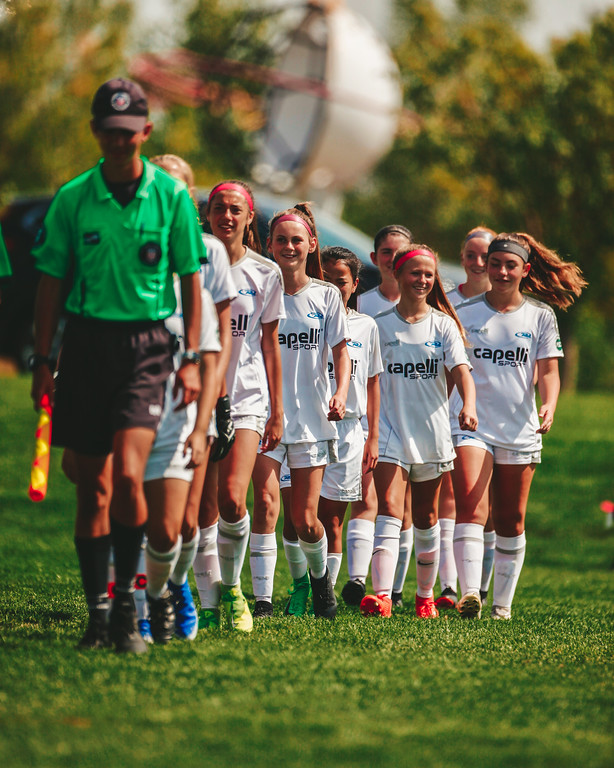
From a Physical standpoint, Adding components of Agility, Flexibility, Mobility, Balance, and Coordination to our sessions can help “reorganize” the body of the athlete after the pubertal stage. Apart from that, agility, explosive strength, acyclic speed, and aerobic powers are good valences to focus on, with an increasing participation of speed and strength endurance.
Warm ups, as they grow, become more important from a biological standpoint. It is adequate now that players perform global warm up routines before going on a second stage in which they perform an activity that intends to review a concept trained during the week. This is also an ideal stage for the player to start adopting the habit of warming up by himself/herself.
Another important thing to consider by this stage is that now players can already perform long aerobic and lactic anaerobic training with effective results, what was discouraged for pre-pubertal groups, as it was explained on the previous age groups, in which the increase of these valencies was mainly a result of metabolic development. Maximal strength is still discouraged, mostly for it’s irrelevance, contrary to explosive strength and aerobic power.
As always, try to be as soccer specific as possible when you train these valencies.
From a Technical standpoint, all the technical gestures can be trained.
Past the small sided stages, the Tactical aspect starts to overcome the technical as the main focus. Now, the players should already be effective in groups of threes and fours, performing soccer concepts associated to lines (defenders, midfielders, and forwards), so as to focus on multi-lines (or small sided groups) concepts . For example, playing out of the back would be a training topic that implies the coordination and collaboration of more than one line, not necessarily involving the 11 side players at this stage.
Recommended activities: If the foundation of previous stages has been solid, activities that involve more than one line like 6v5, 6v6, 7v6, or 7v7 are very useful, with full sided scrimmages 11v11 (remember our 70 games philosophy).
Preferred Training Approach: At this stage, we want to limit unopposed activities. If any, using these short analytical activities preferably at the beginning of the session for short periods of time. Remember the principle from The Rush Blue Thread: We want at least 75% of the session to be game based and opposed. Always avoid having analytical stages as the core of your session.
Meeting Parents
Empathy is one of Rush Soccer’s core values, and we believe it requires little empathy to understand parents’ love for their children and their desire to stay involved. That doesn’t mean parents they know exactly how to be involved. Talk to them, guide them, present this curriculum before the star of the season and explain what you will do and why you will do it. Give them feedback and be open to listening to their concerns. Share expectations and use “we” rather than “I”. Parents and coaches need each other to optimize the development and experience of the players.


